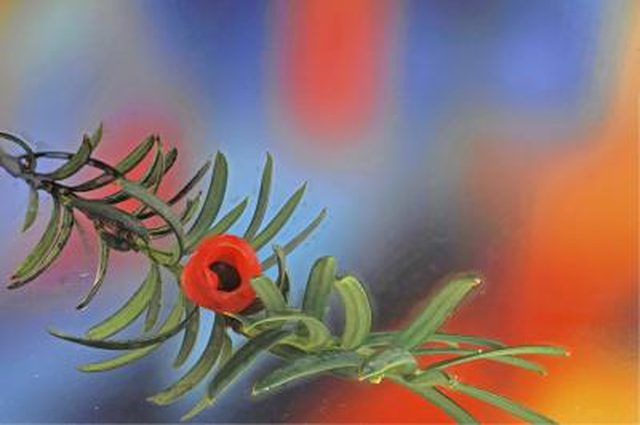Bulbs
Flower Basics
Flower Beds & Specialty Gardens
Flower Garden
Garden Furniture
Garden Gnomes
Garden Seeds
Garden Sheds
Garden Statues
Garden Tools & Supplies
Gardening Basics
Green & Organic
Groundcovers & Vines
Growing Annuals
Growing Basil
Growing Beans
Growing Berries
Growing Blueberries
Growing Cactus
Growing Corn
Growing Cotton
Growing Edibles
Growing Flowers
Growing Garlic
Growing Grapes
Growing Grass
Growing Herbs
Growing Jasmine
Growing Mint
Growing Mushrooms
Orchids
Growing Peanuts
Growing Perennials
Growing Plants
Growing Rosemary
Growing Roses
Growing Strawberries
Growing Sunflowers
Growing Thyme
Growing Tomatoes
Growing Tulips
Growing Vegetables
Herb Basics
Herb Garden
Indoor Growing
Landscaping Basics
Landscaping Patios
Landscaping Plants
Landscaping Shrubs
Landscaping Trees
Landscaping Walks & Pathways
Lawn Basics
Lawn Maintenance
Lawn Mowers
Lawn Ornaments
Lawn Planting
Lawn Tools
Outdoor Growing
Overall Landscape Planning
Pests, Weeds & Problems
Plant Basics
Rock Garden
Rose Garden
Shrubs
Soil
Specialty Gardens
Trees
Vegetable Garden
Yard Maintenance
How to Identify a Shrub With Red Berries
How to Identify a Shrub With Red Berries. When sparkling red fruit captures your attention on a newly discovered shrub, it may be all about the berries. But duplicating that look in your garden requires that you identify the shrub. Berries themselves hold clues to the shrub's identity, but you'll have to dig deeper for your final answer. Time of...
When sparkling red fruit captures your attention on a newly discovered shrub, it may be all about the berries. But duplicating that look in your garden requires that you identify the shrub. Berries themselves hold clues to the shrub's identity, but you'll have to dig deeper for your final answer. Time of year, berry shape and seeds, and the form of flower and berry clusters combine with leaf shape, placement and buds to provide the clues you need to identify your shrub.
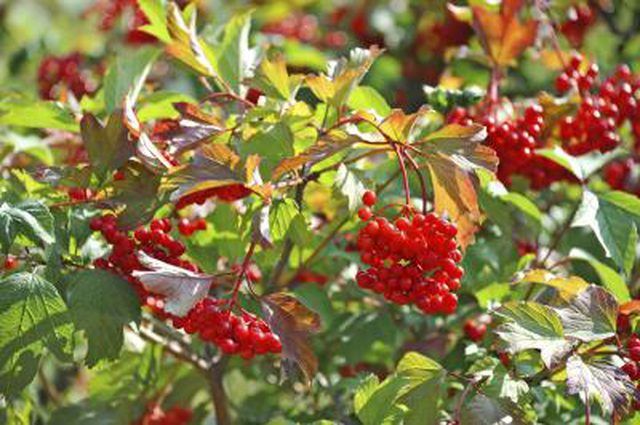
Things You'll Need
Field guide
Whether red fruits hang singly or in large, juicy clusters, begging to be made into jam, they take the place and growth pattern of the flowers that produced them. Pendent clusters of translucent red berries on unbranched flower stems hint at the spring-flowering racemes of the garden red currant (Ribes rubrum cvs.), hardy in U.S. Department of Agriculture plant hardiness zones 3 through 7. Closer examination reveals tiny individual stalks that hold the early-summer berries against green summer leaves. Within each fruit lies a final clue -- multiple seeds, which are the sign of the true berry.
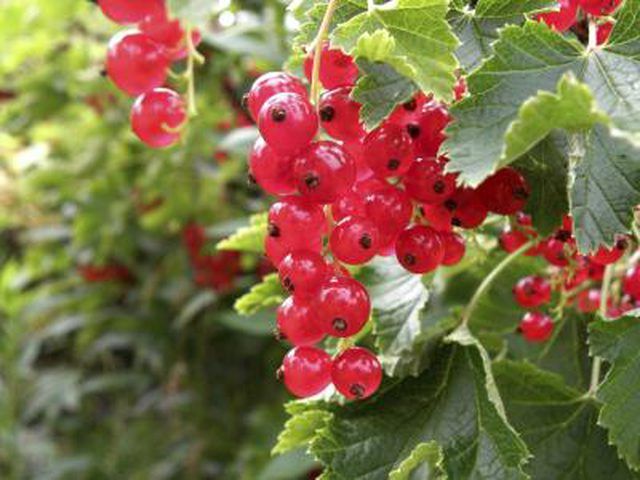
When leaves accompany red berries, their characteristics offer identification tips. Glowing red foliage behind large, drooping, scarlet clusters points to American Cranberrybush (Viburnum opulus var. americana). The undivided, maplelike leaves attach in pairs, opposite to one another, along the stems and live in USDA zones 2 through 7. Held in the flat-topped shape of the shrub's spring-blooming, lacecap-style flower clusters, each late-summer fruit holds a single seed, telling you that these berry imposters are actually drupes.
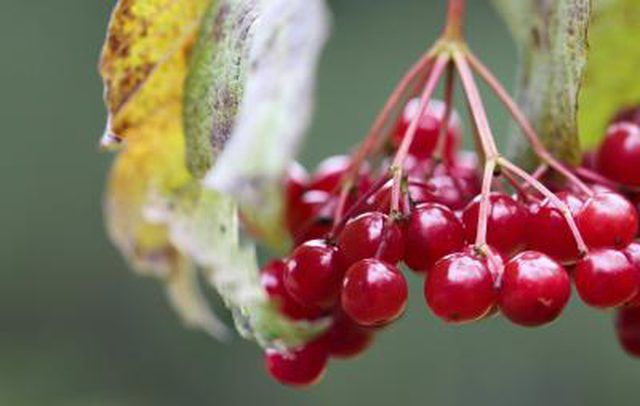
Twigs speak for themselves when persistent red fruits provide their only winter adornment. Single red drupes peppering the length of thornless stems in USDA zones 3 through 9 suggest American winterberry (Ilex verticillata). Scars left by leaves alternate on the stems, and round winter buds just above those scars come wrapped in shingle-like, overlapping scales. A near-identical, fruitless neighbor provides more evidence: winterberry requires pollination by a male shrub for the female plant to bear its abundant, vivid fruit.
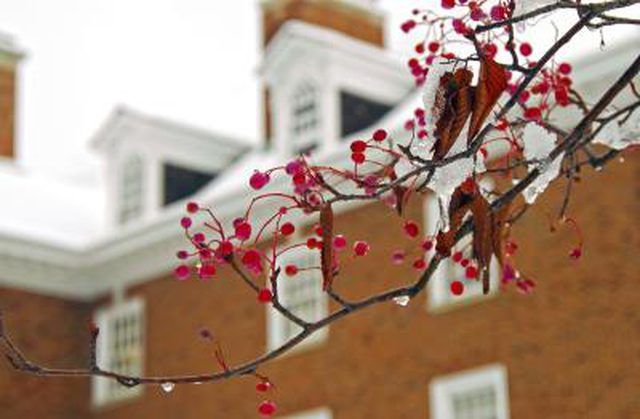
Long after other shrubs forfeit their bounty to raiding birds, a heavy crop of intact berries narrows the possibilities in USDA zones 4 through 9. Red chokeberry (Aronia arbutifolia) keeps its radiant, late-summer fruit virtually untouched into winter. Borne in dense, flat-topped bunches that mimic the clustering habit of the apple-blossom-like blooms they replaced, these glossy true berries go ignored by birds until freezing improves the taste. Alternating leaves, bright scarlet fall color and peeling, reddish-brown winter bark are characteristic of red chokeberry.

Broad, green leaves still in their proper, alternating places on winter stems slim down the pool of botanical suspects in USDA zones 5 through 9. Look for abundant, single, shiny drupes nestled in where twigs and leaves armed with spiny teeth connect to branches. Fruited branches stretching beyond arm's length and egg-shaped winter buds with hairy, overlapping scales suggest American holly (Ilex opaca), which is known to add its spiky beauty and red drupes to classic holiday decorations.
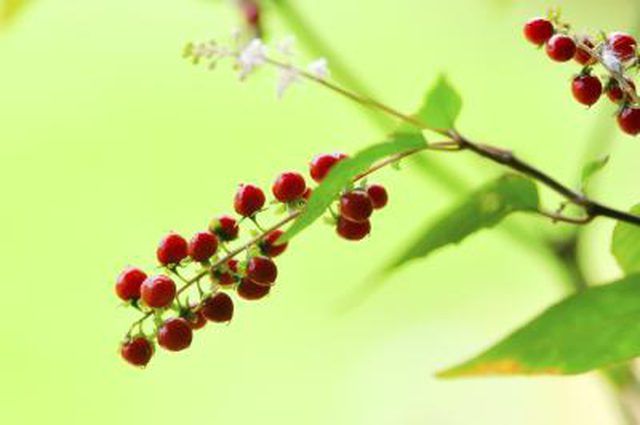
Narrow, needle-like leaves paired with red, winter berries call for a test: rolling a single needle between your fingers. If it won't roll, look for flat, alternating needles in a horizontal plane along stem lengths in USDA zones 2 through 6. Individual cherry-red, lantern-like fruits with single seeds tucked into the fruit's open bottom say the fruits belong to American yew (Taxus canadensis) or its cousins. Neither berries nor drupes, the unusual fruits are actually this conifer's cones, which are a favored food for deer.
